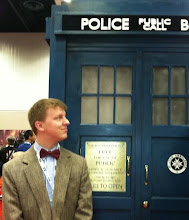For the film follows Vogue as it is preparing for the 2007 September issue. As everyone knows—When I say everyone I mean, those who are interested in fashion—the September issue of Vogue is powerful. It’s their biggest issue and can quickly establish upcoming trends in fashion. Where would we be without the fur revival in the 90s? Let’s not even think of it. In 2007, Wintour was planning the largest issue yet: over 800 pages.

From a journalistic point of view, this act is ambitious but surprisingly maintained. There are levels of disagreement from within the Vogue office, but there are no typical scenes of conflict. Wintour is the ultimate trump card. Throughout the film a creative director, Grace Coddington, constantly disagrees with Wintour’s decisions, but is always shut down within milliseconds. In fact, Coddington is the only one who will openly talk against Wintour. Everyone else praises her or, wisely, keeps mum.
Wintour is a powerhouse and is undeniably the top of the food chain. The fascinating aspect of her perceived persona was that I wasn’t convinced she was a huge fan of fashion. I saw her more interested in power and fashion was just the career she used. If she wanted to be the queen of the book business, I believe she could have maintained it. She alludes to the fact that her family doesn’t respect her career path, but because Wintour is so internal we are uncertain if she cares.
One can unfairly assume that Wintour is simply mean with some of the things she says, like saying the documentary’s cameraman needs to go to the gym. That is more characteristic of her alter ego, Miranda Priestly played by Meryl Streep in The Devil Wears Prada. That would be premature for, from what I’ve seen, it looks like she is more apathetic than purposefully cruel. Some can actually see that as worse, but I find it more respectful.

Speaking of respect—How ‘bout that segue-way!—I was surprised to find myself not being judgmental against the fashion industry. Everyone treats each picture and outfit with such intricate care, just as I would towards a film shot or paragraph. One thing I found really interesting was the terminology they used. The adjective they used the most often to simply describe an outfit was “pretty.” All of Vogue’s fashion was aimed towards women and I liked how that word was used instead of “hot” or “attractive.” For these outfits aren’t used as mating signals. To wear the clothes featured in Vogue is for the intent of pleasing yourself or impressing your fashion peers.
This was one of the many revelations I had that made this film so interesting to a fashion “noob.” I would now like to learn more about this field, but that doesn’t mean I want to DVR America’s Next Top Model (Tyra Banks scares me). For I almost felt pity towards the models. Almost none of them had any speaking lines in The September Issue because in this stage of fashion, they are simply accessible mannequins. Props for the artists. I am not being factious when using the word “artists” because what they are crafting takes an insane amount of creativity and intellect. I want to learn more about them or at the very least, revisit this well-made film.
http://blog.movieset.com/2009/10/01/ticket-stubs-the-september-issue-review/


No comments:
Post a Comment